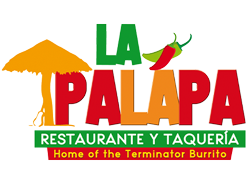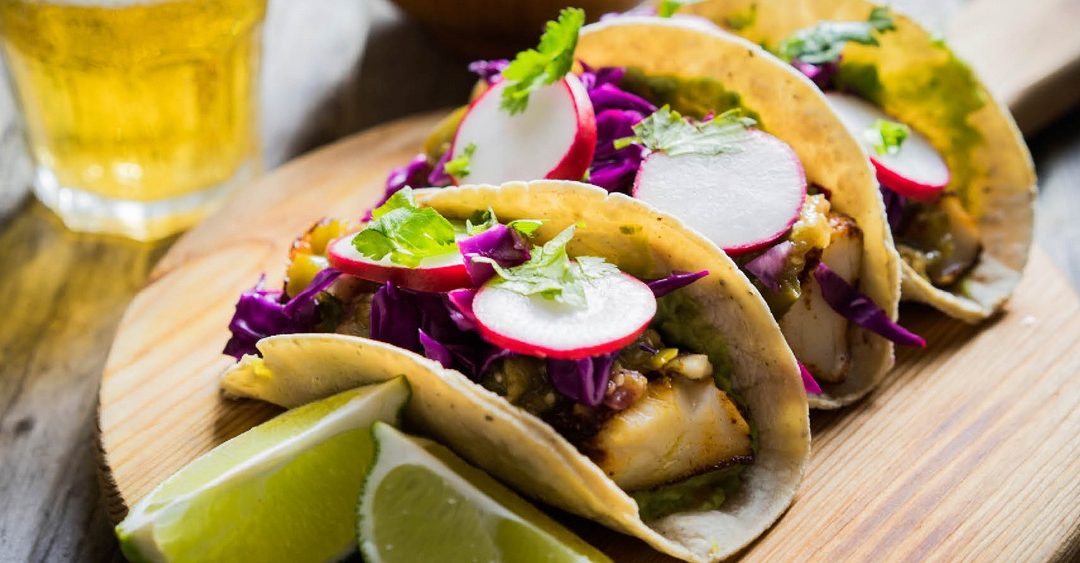Plenty of lucky folks learn to prepare delicious homemade food from their older family members, but what about all the rest of us, those who do not happen to have a Mexican grandmother? Solid advice to the rescue! The following tips and tricks will help you to efficiently concentrate your efforts on cooking flavorful food that is both more authentically Mexican and easier to prepare.
Take Advantage of All the Cilantro
Always use fresh cilantro, which, fortunately, is easy to find nowadays in most supermarkets. Dried cilantro can often to be found in the spice section of the store, but just skip it altogether; it has very little (if any) flavor and is not worth dealing with.
When using cilantro, don’t painstakingly remove all the little individual cilantro leaves from their stems; it is tedious and unnecessary. Tender cilantro stems contain great flavor, and Mexican cooks almost always use the stems and leaves together! Lop off and discard the roots and any hard stems, then chop and use the rest. As with any fresh herb, chop the cilantro right before using it.
Use Lots of Lime Juice—Always Fresh-Squeezed!
With the way it brightens up so many flavors, lime juice could rightly be considered a “nectar of the gods.” Mexicans squeeze lime over sweet and savory dishes galore: grilled meats, fruits, vegetable salads, soups, drinks and tacos of all kinds—even potato chips! Lime juice makes everything yummier by balancing and bringing out flavors, so use it liberally.
There is one “catch,” though: make sure your lime juice is fresh squeezed. The bottled stuff, while very convenient, just does not have the necessary flavor punch. Keep Mexican/key limes in your fridge as a staple (like you do celery, salt, or eggs), get yourself an efficient, easy-to-use manual lime juicer, and you are in business! (The super flavor booster business, that is.)
Flavor with Real Pork Lard
A lot of folks have been brought up to think of pork lard as one of those embarrassingly old-fashioned ingredients that no health-conscious modern person would go anywhere near. Lard is beginning to get its respectability back though, as nutritionists rethink and chefs rediscover its properties. The thing is, you just can’t beat pork lard for flavor in many dishes, Mexican and otherwise.
It needs to be good quality pork lard, though. Steer clear of the hydrogenated, near-flavorless commercial lard that resembles processed vegetable shortening. Get some real, all-natural pork lard from a farmer, butcher, or specialty market. You’ll be glad you did!
Natural pork lard keeps well in the freezer for several months, and if you freeze it in ½- to ¾-inch thick slabs (in a zip-top placed on its side), you can break off the small amount that you will need for each recipe.
If all you have access to, though, is the insipid overly-processed commercial “lard”—or if you don’t eat pork—skip it. In most recipes, you can substitute vegetable oil for the lard (though results will vary).
Recycle Leftover Salsa, Sauce, or Mole
Authentic Mexican food is, in a big way, about sauces: salsas for eating with chips, bottled sauces for sprinkling on snacks, cooking sauces and moles for stewed dishes, table sauces for everyday condimenting. If you end up with leftover sauce after a meal, don’t you dare throw it out! Even if the dish itself is all gone, that extra sauce will bring you joy once again when it is added to soup, spooned over rice or eggs, stirred into a humdrum stew, or used (by itself or mixed with other ingredients) as a dip or spread.
Store leftover sauce tightly covered in the refrigerator; as you find ways to take advantage of all that flavor in the next few days, you’ll be so glad you kept it!
Boost Flavor with Dry Roasting
Many Mexican recipes include a step that involves roasting tomatoes, chiles, tomatillos, onions, cloves of garlic, or other ingredients on a comal or in a skillet over low to medium heat. This is called dry roasting because it does not involve oil or any other fat. Though it is an additional step in food preparation, it’s well worth the effort; dry roasting adds a complexity of flavor that is unobtainable otherwise.
Toasting dried chiles needs to be done with your full attention, as peppers can burn quickly. (Discard burned chiles, as they can make the dish bitter.) Tomatoes, tomatillos, and onions, though, can be dry roasted at the same time as you are doing other food prep—just be sure to turn them occasionally so that they can get browned or just slightly burned on all sides.
Other ingredients, such as nuts, seeds, and whole spices, are also sometimes toasted on a comal or skillet, and doing so brings out their best flavors. The wonderful aromas that arise from this process are a real and natural mood booster, as well.
Let the Flavors Speak
A lot of commercial restaurant “Mexican” food is served smothered in melted cheese and/or sour cream. Though a modest amount of these ingredients can certainly add zing to a dish, too much just smothers the other flavors and turns an otherwise interesting dish into something practically tasteless. Go by the “less is more” philosophy when using these garnishes. Too much cream and melty cheese can very easily mute the very flavors we are hoping will sing!
A similar caveat applies to the spice cumin. Ground cumin is used often in Tex-Mex dishes, but inside Mexico itself whole cumin seed is much more commonly employed. (It is also often toasted before being added to the dish; see note above on dry roasting.) Cumin has a strong flavor and can easily overpower any other ingredient; use it sparingly.
Don’t Fight the Piloncillo
Piloncillo, a sweetening agent created by pouring unrefined sugar cane juice into molds and drying it, is common throughout tropical Latin America, though it goes by other names outside of Mexico. Must more flavorful than white or brown sugar—and containing many more nutrients—piloncillo is a staple ingredient in many Mexican dishes.
The only problem is that piloncillo, whether in block or cone form, is dense and very hard. No, I mean really really hard, as in if-it-weren’t-for-diamonds-this-would-be-the-hardest-substance-known-to-man hard. As in hitting-it-with-a-hammer-on-a-concrete-floor-won´t-even-break-it-up hard. Believe me, people have tried.
To cook with this stuff, you need to be smarter than the piloncillo; that is to say, use your brain, not your brawn. Piloncillo dissolves relatively easily in hot water, which is why making a syrup with this substance is usually one of the first steps in a recipe calling for it. If, for some reason, you really do need it dry, grating piloncillo is usually much easier than pounding it.
Do try to use genuine piloncillo when it is called for. If it is simply impossible to procure where you live, substitute dark brown sugar in any recipe calling for piloncillo, and add a teaspoon or so of molasses per pound of sugar; this won’t taste exactly like the real article, but you will have made very acceptable approximation.
Make the Most of Home Cooked Beans
While using canned beans is very convenient (be sure to thoroughly rinse whole beans before using, to get the “canned” flavor off them), home cooked are much more delicious.
Beans do take quite a while to cook, though, so it makes perfect sense to go big. Cook double or triple what you think you´ll need, then freeze the leftovers. The next time you need homemade Mexican beans, you´ll have them on hand in no time!
And please, please don´t violate the Cardinal Rule of Cooked Beans: Never ever discard leftover bean broth! There is so much flavor in that liquid that can be added to soups and stews that it should actually be considered a crime to throw it out.
Avoid Tears While Chopping Onions
Mexican food uses a lot of onions, and most of them are sliced or chopped. Folklore and science have both contributed to our knowledge of why we cry when cutting onions, and both have put forth techniques for avoiding these tears. What works for some people doesn´t for others. Mix and match some of the following to find your own effective method:
- Refrigerate the onions before cutting them.
- Use a very sharp knife in order to avoid crushing the onion pieces (which releases more irritating substance into the air).
- Cut your onions on the stove, under the running extractor fan.
- Cut your onions next to the sink. Have the faucet on, with cold water running during the whole time you are slicing or chopping.
- Chop your onions next to a lighted candle. The fire will burn away many of the offending gases that cause tears.
Use Care When Working With Chiles
Chile peppers are not hot only the tongue, but also on the skin and mucus membranes. Though pepper piquancy can vary widely depending on type of chile and growing conditions, it´s always best to err on the side of caution.
When cutting into fresh chiles, either wear plastic gloves or exercise extreme care to minimize contact between your hands and the pepper´s inner flesh (including veins and seeds). Don´t touch your face, hair, or eyes. Wash your hands thoroughly with hot, soapy water to get as much capsaicin (the oil in peppers that causes their spiciness) off as possible, but continue to avoid touching your eyes or any other sensitive place until you are sure that all the burning substance is gone.
When cooking with chiles, never lean your head over the pot; the vapor or fumes can burn your face and eyes. You will probably forget this tip—but hopefully only once.


Recent Comments